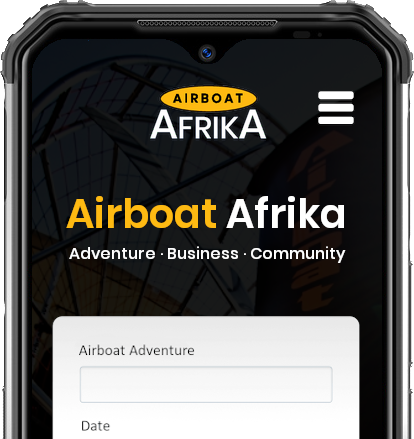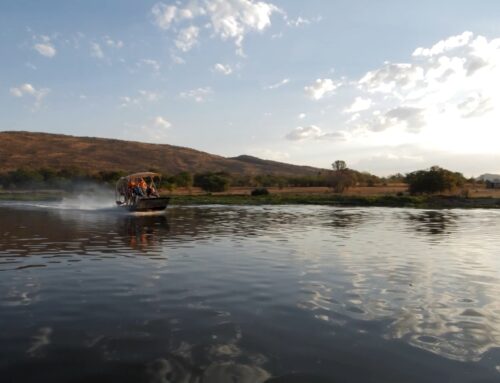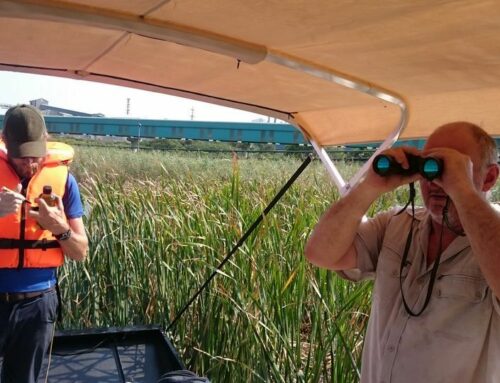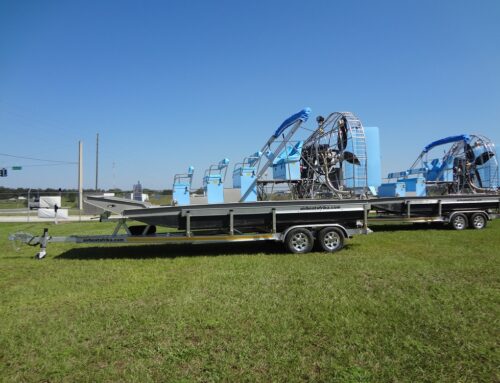Airboat, Diamonds & Dirt
Diamonds are a girl’s best friend… And diamonds, gold & platinum is what South Africa is known for. And Nelson Mandela, of course.
Some of the biggest and most famous diamonds ever discovered (Allnatt, Blue Moon of Josephine, Cullinan, Premier Rose, The Symbolic Yellow, Taylor–Burton) are from Cullinan, about 75 miles / 120 km northeast of Johannesburg.

Founded in 1902, Cullinan is a small, well-preserved 19th Century mining town named after the founder of the Premier Diamond Mine, Sir Thomas Major Cullinan. The semi-rural community is made up of mining families, farmers, artists, and on weekends, bikers and families looking to escape to the country.
Since the discovery of diamond pipes, the Cullinan Diamond Pipe was established to be the oldest in the world. In 1905, only a mere 30 feet / 9 m from the surface, the world’s biggest rough diamond, the CULLINAN at 3,106 ct, was found. It was given to King Edward VII of England on his 66th birthday – and sent to him by regular mail!
In the course of its ongoing expansion into ever deeper shafts, the mine now needs to determine the usable water available in its tailings dam. This is crucial, as the mined Kimberlite rock gets crushed, and the gravel is washed over sticky-surface rolling belts. The higher density diamonds stick to the belt, and the gravel is flushed out.
After over 100 years of operation, the dam water is saturated with ultra-fine clay particles (nano-meters in size), and an array of elements such as iron, manganese, aluminum, selenium, sodium, potassium etc. The pH hovers around 9 or more, with a turbidity in excess of 24,000 NTU! Essentially – it’s trying to become a solid.
A Non-Newtonian liquid

The first airboat test ride was the strangest ever. Going onto plane is quick ‘n’ painless as always. But as I take my foot of the gas we don’t just slide – there’s a forward jerk as the airboat comes off plane. This stuff is breaking us! Even weirder, our wake keeps on rolling forever – the wave motion doesn’t want to stop. Does that make any sense? At all?
This is not water. It’s a light grey non-Newtonian liquid. Wet, but probably bullet proof. A killer to any kind of machine.
We’re here to map the entire dam, determine density and develop a 3D map of layers of whatever is in there. So it’s bathymetry and water sampling. The first attempt to get this done ended in utter failure – the outboard on the boat they used packed up in a single day. Impeller ground away, all seals blown, overheat, death. Never seen anything like it.

That’s where the airboat comes in. Set up a shore GPS for reference, and pile all the equipment on board: generator, UPS, GPS, computers, screens, cables, lines, rigging for transducer and sensor probes. Getting all these clever machines to talk to each other and the computers to record everything takes almost a full day. In between, it turns out the local gas station ran out of 95, and we have to feed the generator 93 petrol. It ain’t gonna be happy. Maybe we should dump a mothball into the tank to raise the octane.
The lake edges are mapped, and a 100m grid imposed with measuring points for the depth sensor. The first few lines with the transducer just under the surface lead to… nothing. No useful readings. This thing looks down to about 9800 feet / 3000 m in an ocean environment. And though it’s really a fish finder, it’s a fancy, expensive one for surveying. Only one conclusion: this stuff is too dense, about 65 feet / 20m down, the transducers reads it as bottom. And we know it’s deeper than that.
Ok, so now we have to drop the sensor on every line intersection point. And haul it back up. Only 200 times or so. 33 lbs / 15 kg don’t seem like much, but it is getting heavier with every pull. Clint & Greg are getting a nice workout.
I’m targeting every point as closely as possible, staring at my screen, where the GPS is tracking my course and drift. The glare from the sun and reflection off the bright grey liquid make it difficult to see. We’ll probably go snow blind… in Africa!
This late afternoon, we get 30-odd drops done. Time to review the data quality, improve our rigging. And fix the generator that started to get a real attitude about 93 petrol. (Which means, with a bit of luck, it may just be 90, really.)
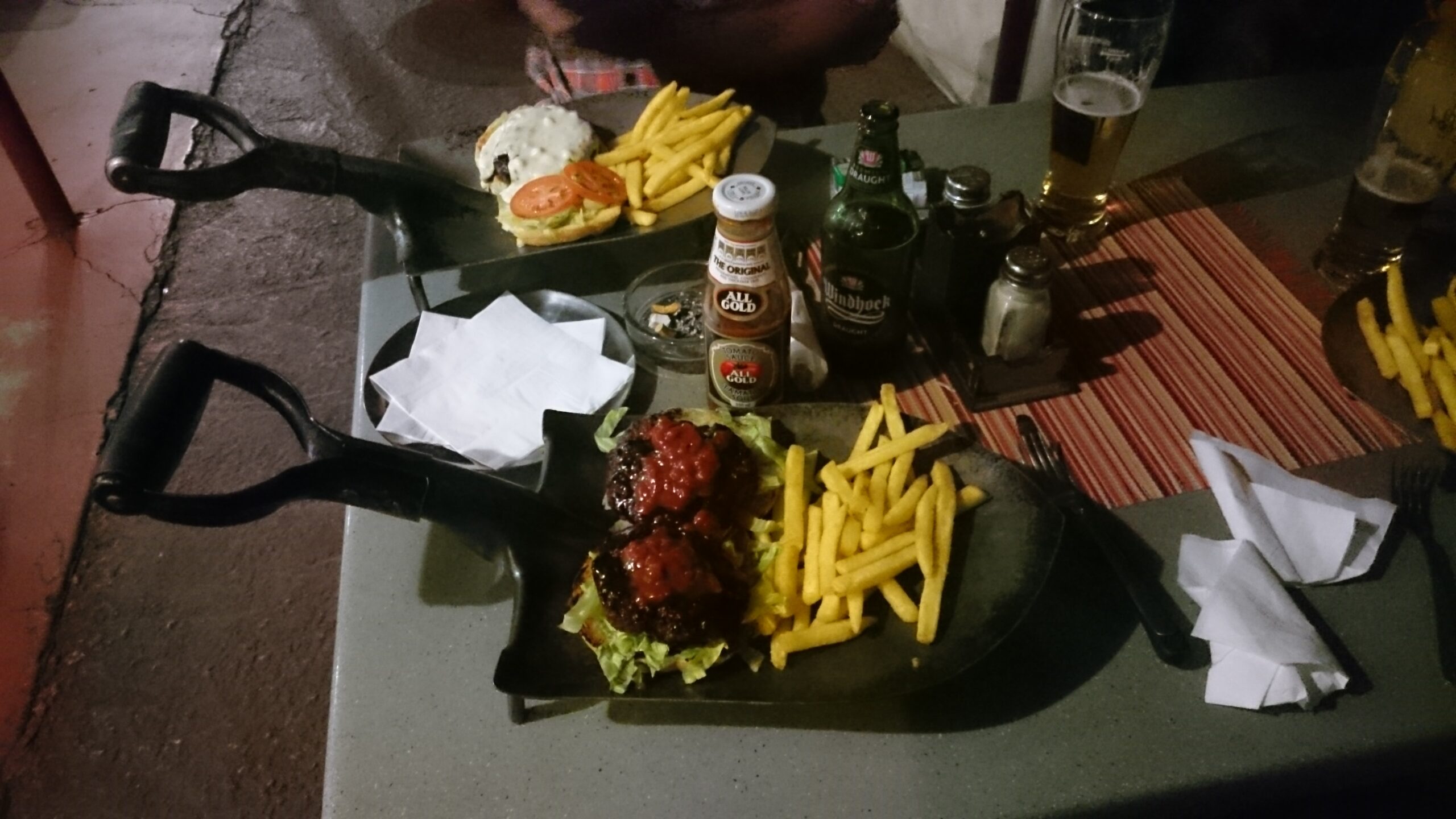
Cullinan being a village next to the mine, dinner options are few. But the railway station has a nice pub to hang out. Food is fresh, good, plenty, the peri-peri is hot and the beer is cold. Food is not served on plates. It comes on a shovel.
All in all, 6 days of bathymetry, and we’re done. The dirt sticking to everything by now is unimaginable. We ride the airboat onto the trailer and take it to the mine’s workshop to use their high-pressure washer. But they have no water, it’s Saturday. I love Africa.
Potchefstroom University
Part 2 of the project is promising. A team from Potchefstroom University is coming out for the water sampling. Jessica calls from the security sign in at the mine entrance. Only 4 hours later they’re already through the gates. They’re not kidding here, it’s a diamond mine. It takes us an hour every morning to get in, and even longer in the evening to get out.
Diamonds on the soles of my feet… and they check for that. Dirty boots? Go back and wash. Can’t have no mud sticking around. Could be something in there. It’s painful, because after a day on the dam, we look like warthogs. Sunrise to sunset, you get hungry. And thirsty! This grey stuff is everywhere, even in the air, 20 minutes into the day, you’re parched.
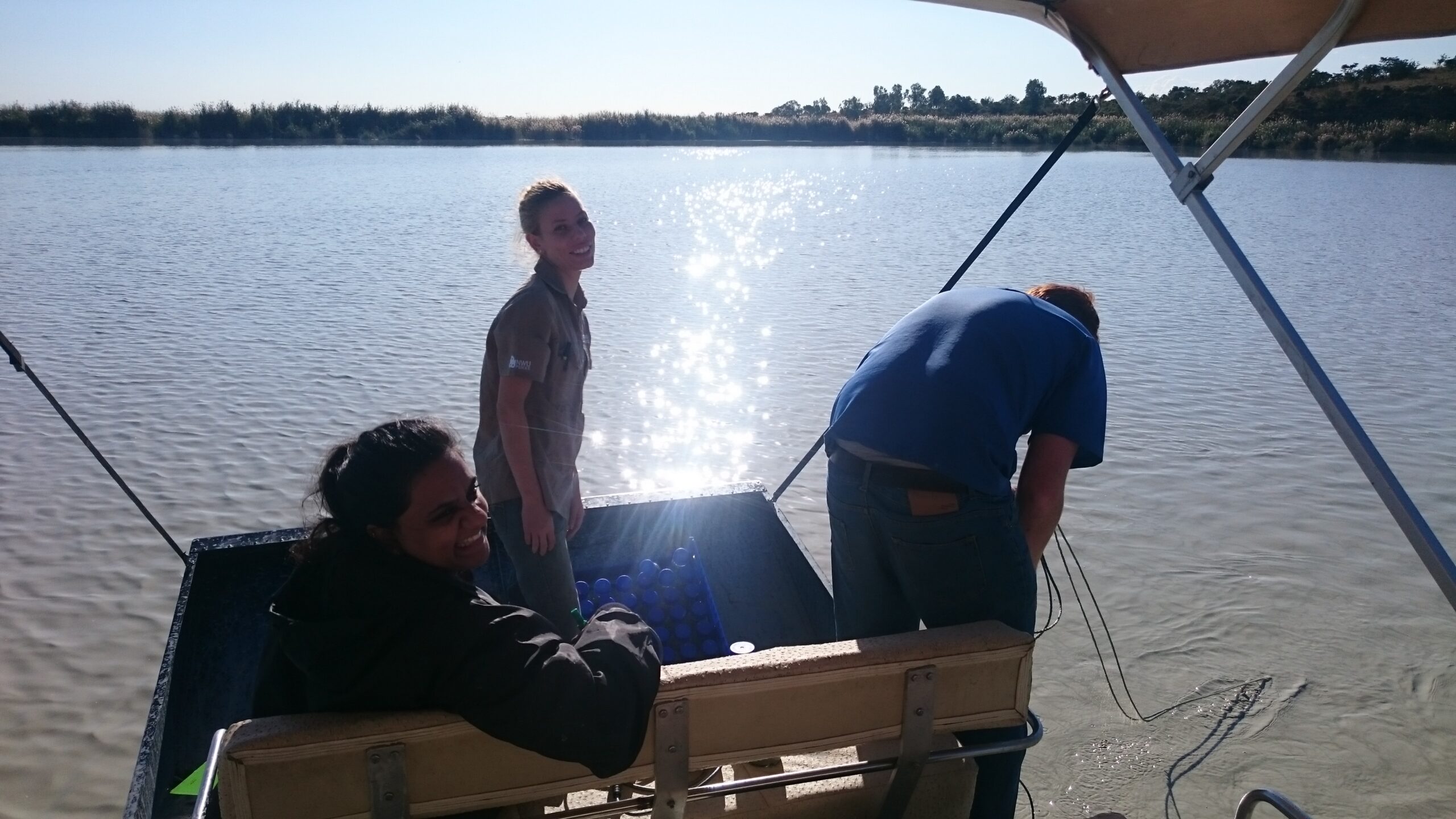
3 more days with the academics on board. Too bad Jessica left us with a 23-year old kid. His first field assignment. Poor boy, dedicated, but clueless. We get him organised. Put this there, you won’t need that, stand here, don’t lean forward unless you want to swim in this, label your stuff, note down your GPS references. 4, 8, 12 & 16 m samples are taken, bottled, labeled, and will be sent to the lab for analysis.
Together with the bathymetry this will furnish the mine management with enough data to manage their volumes. We already saw that at around 26 feet / 8 m depth, the density spikes from 1,100 to 1,300, and into the silt around 82 feet / 25 m down it rockets beyond 1,600. Normal water is at 1,000 (@ 32 F / 4 C, liquid water’s highest density). This is not healthy. You cannot drink this… you must chew it.
Friday morning, we pack up. Even the wash bay has fresh water, so for 50 bucks – about $ 3.50 – I get a guy to hose down the airboat. We leave the Diamond Mine, quick lunch in the village, and we’re driving home. 3 more days of cleaning and re-packing everything.
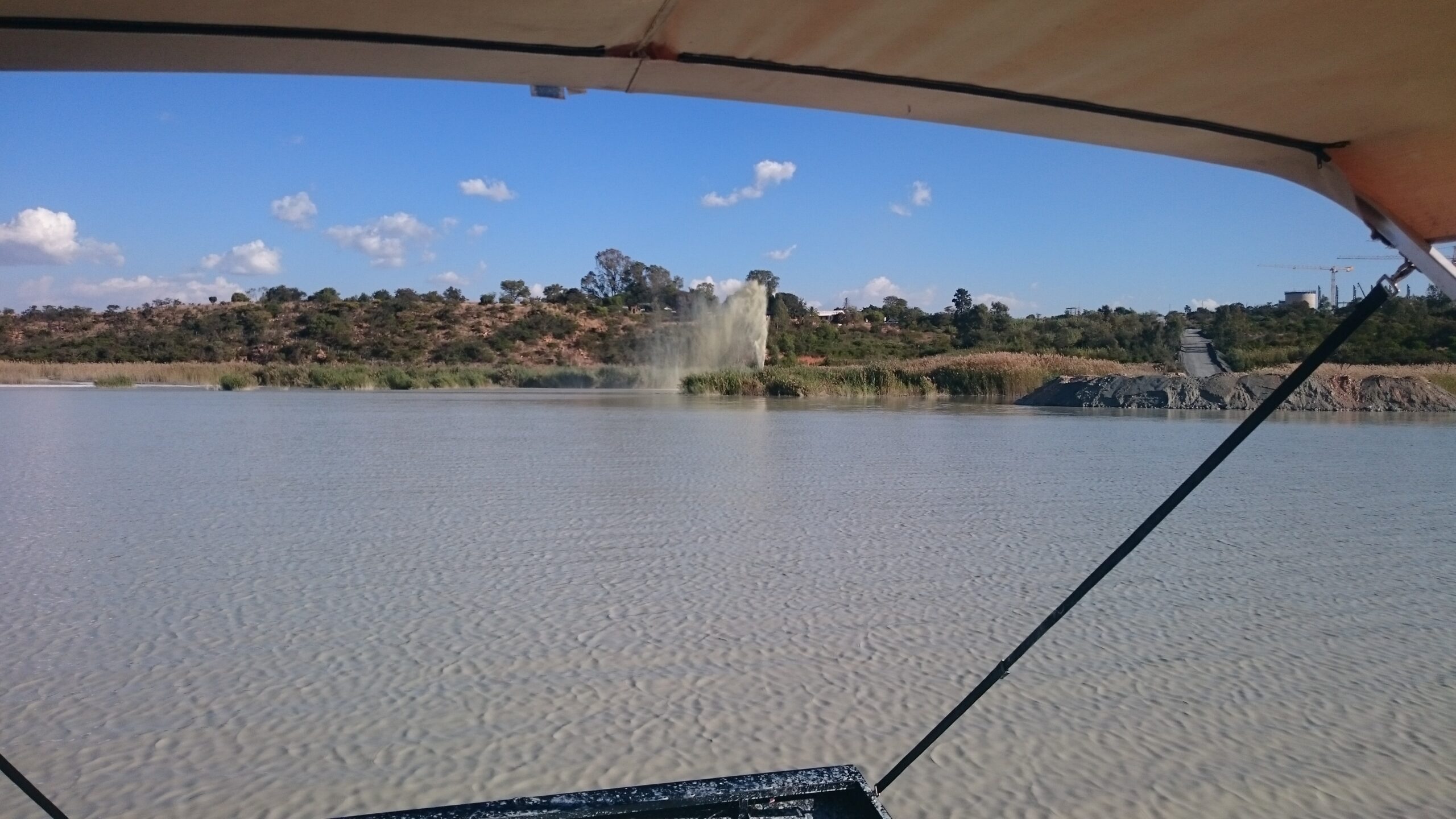
It was a good charter – thanks for the work guys – and very interesting. In this business, you never stop learning, and to spend time in the oldest and most productive of all diamond mines in the world is quite something. We’ll be back next year.
Still hoping to find a little something in the dirt…

